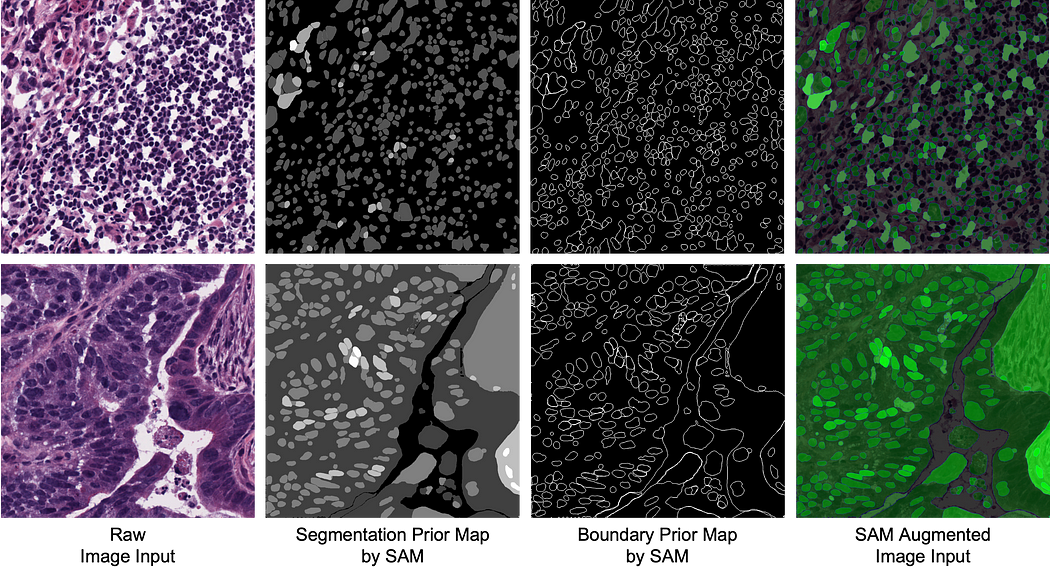Introduction Over the past decade, many projects involving computer vision (CV) have emerged, both in small scale proof-of-concept projects and bigger production applications. Typically:
medical diagnosis help using radiography, biopsy and other medical images satellite imagery to analyse buildings, land use, etc. object detection and tracking in various contexts, like traffic estimation, waste estimation, etc.

The go-to-method for applied computer vision is quite standardised:
define the problem (classification, detection, tracking, segmentation), the input data (size and type of picture, field of view) and the classes (precisely what we are looking for) Annotate some pictures pick a network architecture, train — validate, get some statistics build the inference system and deploy it By the end of 2023, the AI field is stormed by new success coming from generative AI: large language models (LLMs), and image generative models. It’s on everyone’s lips, does it change anything for small scale computer vision applications?
We’ll explore if we can leverage them to build datasets, leverage new architectures and new pre-trained weights, or distilling knowledge from big models.
Small Scale Computer Vision What we are typically interested in here are applications that can be built and deployed at a relatively small scale:
💰 the cost of development should not be too high 💽 it should not require a monster infrastructure to train (think compute power and data scale) 🧑🔬 it should not require strong research skills, but rather apply existing techniques ⚡ the inference should be lightweight and fast, so that it could be embedded or deployed on CPU servers 🌍 The overall environmental footprint should be small (think compute power, general size of models / data, no specific hardware requirement) This is clearly not the trend in AI these days, as we see models with billions of parameters starting to be standard in some applications. We hear a lot about these, still it’s important to remember that caring about smaller scale / footprint is critical, and that not all projects should follow the scale trends of Google, Meta, OpenAI or Microsoft. Even if they’re not in the spotlight, most interesting computer vision projects are actually at a much smaller scale than the ones making the headlines.
This does not mean that the impact of the application should be small or narrowed, just that we actively care about the development and inference costs.
With this in mind, can we still take advantage of recent developments in AI for our applications? Let’s first dive into the world of foundation models to understand the context.
Foundation models in Computer Vision New Large Language Models (LLM) have been popular because you can easily use foundation models in your applications (many are open source, or usable through an API). Think about GPT, Bert, Llama as such models. A foundation model is a very large, generic neural network which is useful as a basis for most downstream tasks. It contains knowledge about a very broad range of topics, semantics, syntax, different languages, etc.
In Computer Vision we’ve been using such models for a while: it’s been standard in the last 10 years to use a neural network pre-trained on ImageNet (1 million labelled images) as a “foundation” model for a downstream task. You can build your neural network on top of it, and fine-tune it on your own data if needed.

There are two main conceptual difference between ImageNet pre-trained networks and LLMs:
the type of data we train it on: ImageNet relies on purely supervised learning: a large scale classification task, while LLM are generative models: they are trained in a self-supervised manner using raw text (the task is just to predict the next words).
the adaptation of these foundation models to new tasks: ImageNet pre-trained network systematically requires a new learning procedure to be adapted to a new task. For LLMs, while it’s possible to fine-tune the models, the model is powerful enough to be used for a downstream task without any further training, just by prompting the model with the right information to make it useful for a new task.
Most current Computer Vision applications such as classification, object detection, segmentation still use ImageNet pre-trained networks. Let’s review new models that are available or about to be, and could be of use for our Computer Vision tasks.
New foundation models for computer vision: a short review
In the world of Computer Vision, moving away from ImageNet, there’s been many examples of self-supervised networks, some of them being generative models (think GAN and more recently diffusion models). They are trained on just raw images, or image-text pairs (for instance an image and its description). They are sometimes called LVM (Large Vision Models).
(Weakly) supervised vision models on extremely large amounts of data:
DINOv2 (Meta) — A collection of large ViT (vision transformers, 1B parameters) explicitly aimed at being a good foundation model for Computer Vision, trained in a fully self-supervised manner.

More info, please contact: sienovo.com
SAM Segment Anything (Meta) — a ViT working on high resolution images, specifically designed to be good at segmentation, and enabling zero-shot segmentation (no annotation required to produce new segmentation masks). Another use case is to use SAM as an additional input in medical image segmentation.

